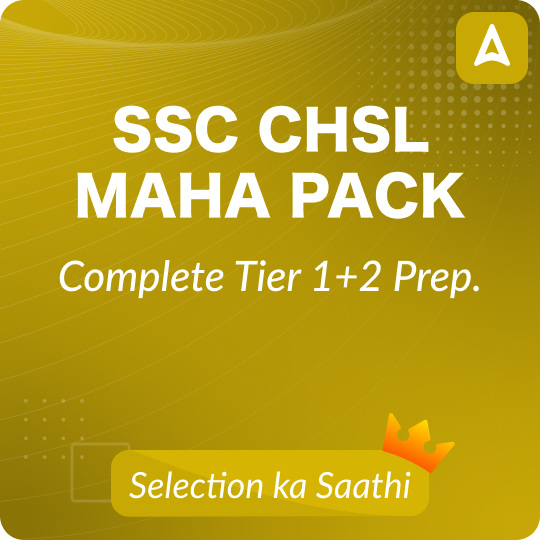In the Indian legal system, the High Courts occupy a prestigious role as the highest appellate courts within specific states or Union Territories. According to Article 214 of the Indian Constitution, each state or Union Territory is required to have at least one High Court. Furthermore, Article 231 allows for the establishment of a unified High Court to cater to the legal needs of multiple states. Currently, India boasts a total of 25 High Courts, each playing a vital role in the nation’s legal framework.
List of High Courts in India
There are total 25 High Courts in India. The oldest High Courts are Bombay High Court, Madras High Court and Kolkata High Court which were established in 1862 and the newest one is Andhra Pradesh High Court which is established in 2019.
Here is the list of High Court of India:
| S. NO. | Name | Year of Establishment | Territorial Jurisdiction | Seat & Bench |
| 1. | Bombay | 1862 | Maharashtra
Dadra & Nagar Haveli and Daman Diu Goa |
Seat: Mumbai
Bench: Panaji, Aurangabad and Nagpur |
| 2. | Kolkata | 1862 | West Bengal
Andaman & Nicobar Island |
Seat: Kolkata
Bench: Port Blair |
| 3. | Madras | 1862 | Tamil Nadu
Pondicherry |
Seat: Chennai
Bench: Madurai |
| 4. | Allahabad | 1866 | Uttar Pradesh | Seat: Allahabad
Bench: Lucknow |
| 5. | Karnataka | 1884 | Karnataka | Seat: Bengaluru
Bench: Dharwad and Gulbarga |
| 6. | Patna | 1916 | Bihar | Patna |
| 7. | Guhawati | 1948 | Assam
Nagaland Mizoram Arunachal Pradesh |
Seat: Guhawati
Bench: Kohima, Aizwal and Itanagar. |
| 8. | Odissa | 1949 | Odissa | Odissa |
| 9. | Rajasthan | 1949 | Rajasthan | Seat: Jodhpur
Bench: Jaipur |
| 10. | Madhya Pradesh | 1956 | Madhya Pradesh | Seat: Jabalpur
Bench: Gwalior and Indore |
| 11. | Kerala | 1958 | Kerala & Lakshadweep | Ernakulam |
| 12. | Gujarat | 1960 | Gujarat | Ahmedabad |
| 13. | Delhi | 1966 | Delhi | Delhi |
| 14. | Himachal Pradesh | 1971 | Himachal Pradesh | Shimla |
| 15. | Punjab & Haryana | 1975 | Punjab, Haryana and Chandigarh | Chandigarh |
| 16. | Sikkim | 1975 | Sikkim | Gangtok |
| 17. | Chhattisgarh | 2000 | Chhattisgarh | Bilaspur |
| 18. | Uttarakhand | 2000 | Uttarakhand | Nainital |
| 19. | Jharkhand | 2000 | Jharkhand | Ranchi |
| 20. | Tripura | 2013 | Tripura | Agartala |
| 21. | Manipur | 2013 | Manipur | Imphal |
| 22. | Meghalaya | 2013 | Meghalaya | Shillong |
| 23. | Telangana | 2019 | Telangana | Hyderabad |
| 24. | Andhra Pradesh | 2019 | Andhra Pradesh | Amravati |
| 25. | Jammu & Kashmir and Ladakh (NOTE: Jammu & Kashmir High Court established in 1928. Post-bifurcation of J&K into two UTs; there is now a common High Court.) | 2019 | Jammu and Kashmir
Ladakh |
– |
Key Points related to High Courts
- The oldest High Court of India is Calcutta High Court (now Kolkata), established in The Bombay and Madras High Courts were also established in the same year.
- Three Chartered High Courts of India are: Calcutta, Bombay and Madras High Courts.
- The newest High Courts are the Telangana High Court and Andhra Pradesh High Court, established in the year 2019.
- The Madras Law Journal, published by the Madras High Court, was the first journal in India dedicated to reporting judgements of a Court (1891).
Appointment of the Judges
- Chief Justice of a High Court is appointed by the President with the consultation of the Chief Justice of the Supreme Court.
- The other judges are appointed by the President, Governor and the Chief Justice of the High Court.
Qualifications
- He should be a citizen of India.
- He should have been an advocate in one or more High Courts or a judge for at least 10 years in subordinate courts in India.
Tenure
Initially the retirement age of the judges of High Courts was 60 but it was raised to 62 in 1963 by the 15th Constitutional Amendment Act, 1963.
Salary
- The salary of Chief Justice of High Courts in India is 2,80,000 per month.
- The salary of other judges is 2,50,000 per month.
Removal
- A judge may leave his office by sending a resignation letter to the President.
- His office would be considered to have been vacated if he is appointed as a judge of the Supreme Court or is transferred to some other High Court.
- The High Court’s Judge may also be removed by Impeachment process.
Powers and Functions of High Courts
- Every High Court has the power to issue writs of habeus corpus, mandamus, prohibition, quo-warranto and certiorari for the enforcement of Fundamental Rights or the other purposes.
- Every High Court has superintendence over all Courts and Tribunals throughout the territories in relation to which it exercises jurisdiction.
- High Courts can transfer the cases of subordinate courts.
- High Courts have control over their subordinate courts.
- High Court has original and appellate jurisdiction in civil and criminal matters as matters conferred by the Codes of Civil and Criminal Procedure and the Letters of Patent.
Important terms related to High Courts
- Tribunal: A tribunal, is any person or institution, with authority to judge, adjudicate on, or determine claims or disputes- whether or not it is called a tribunal in its title.
- Permanent Bench: A permanent bench comprises of one or more High Court Judges who sit yearlong at a particular location that is different from the permanent seat of the High Court.
- Circuit Bench: Circuit Benches are temporary courts which hold proceedings for a few selected months in a year.
- Division Bench: Division Bench is a term in which a case is heard and judged by at least 2 judges.
- Full Bench: Full Bench means a bench comprising three or more judges as may be nominated by the Chief Justice.
Find More General Studies News Here










 States and Capitals - How Many States in...
States and Capitals - How Many States in...
 Which Indian Village is Known as the Whi...
Which Indian Village is Known as the Whi...
 Monthly Current Affairs PDF – July 2025...
Monthly Current Affairs PDF – July 2025...

